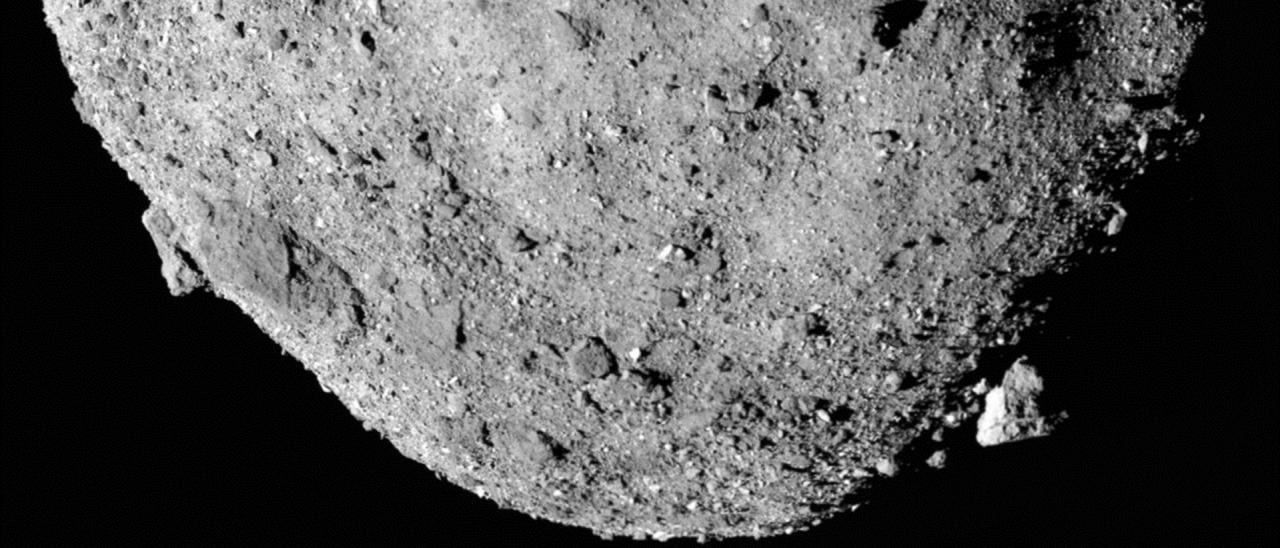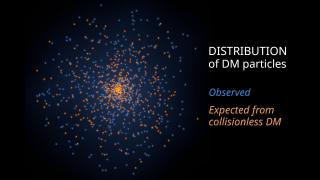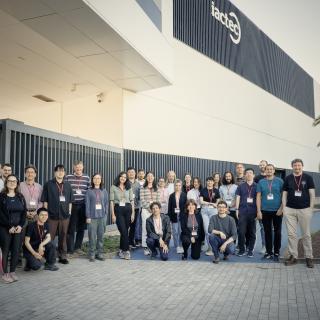During the Approach and Preliminary Survey phases of the mission (August to December 2018) a series of images was acquired by the OSIRIS-REx Camera Suite (OCAMS), down to a scale of 33 cm/pixel, while the OSIRIS-REx Visible and InfraRed Spectrometer (OVIRS) and the OSIRIS-REx Thermal Emission Spectrometer (OTES) obtained disk-integrated spectra of the asteroid, covering a full rotation of the object.
Images acquired with MapCam using 5 different filters provide an average albedo (fraction of the light reflected by the surface of the asteroid) of about 4.5 %, consistent with the spectral type of Bennu as determined from ground-based observations, and in agreement with the results from OSIRIS-REx disk-integrated photometry. Such a dark surface and spectral behavior are also consistent with the reflectance values observed for CM carbonaceous chondrites, some of the most primitive meteorites.
Juan Luis Rizos, Marcel Popescu, Javier Licandro and Julia de León, IAC and ULL researchers and members of the OSIRIS-REx Image Processing Working Group (IPWG), contributed to the processing and analysis of the images obtained by MapCam. “We need to correct the images for differences in brightness caused by different viewing geometries and illumination angles to properly interpret the detected features in the surface as actual differences in the material” explains Juan Luis Rizos, PhD student at the IAC/ULL and part of the IPWG.
Bennu shows an extensive surficial diversity, with a large variety of particle sizes. The surface of the asteroid is covered by more than 200 boulders larger than 10 m in diameter, appearing predominantly at high latitudes. Boulders also show a wide range of morphology, sizes, and albedo, with variations in brightness from 3.3% to 15%, larger than any variation observed on other asteroids visited by spacecraft. Such differences could be due to primordial differences in the parent body that originated Bennu after a collisionally disruptive event, or due to material that has been exposed to different levels of solar wind ions or micrometeorite bombardment. Interestingly, Bennu exhibits only small areas free of boulders and with fine dust (regolith). Actually, Bennu’s global average thermal inertia (the resistance of a material to temperature changes) determined from data acquired by OVIRS and OTES, suggests a surface dominated by particles having sizes from 0.5 to 5 cm, which is not what is observed in the images. “Thermal models are used to translate measurements of thermal inertia into particle sizes. It is evident from what we have found in Bennu that these models have to be revised” says Marcel Popescu, IAC/ULL researcher and part of the IPWG.
Most of these questions will be solved with observations at higher spatial and spectral resolutions during the Detailed Survey phase of the mission, planned for the Spring of 2019.
Scientific article: D. N. DellaGiustina, J. P. Emery, D. R. Golish, B. Rozitis, C. A. Bennett, K. N Burke, R.-L. Ballouz, K. J. Becker, P. R. Christensen, C. Y. Drouet d’Aubigny, V. E. Hamilton, D. C. Reuter, B. R. Rizk, A. A. Simon, E. Asphaug, J. L. Bandfield, O. S. Barnouin, M. A. Barucci, E. B. Bierhaus, R. P. B. Binzel, W. F. Bottke, N. Bowles, H. Campins, B. C. Clark, B. E. Clark, H. C. Connolly Jr., M. Daly, J. de Leon , M. Delbó, J. D. P. Deshapriya, C. M. Elder, S. Fornasier, C. W. Hergenrother, E. S. Howell, E. R. Jawin, H. H. Kaplan, T. Kareta, L. Le Corre, J.-Y. Li, J. Licandro, L. F. Lim, P. Michel, J. Molaro, M. Nolan, M. Pajola, M. Popescu, J. L. Rizos Garcia, A. Ryan, S. R. Schwartz, N. Shultz, M. A. Siegler, P. H. Smith, E. Tatsumi, C. A. Thomas, K. J. Walsh, C. W. V. Wolner, X.-D. Zou, D. S. Lauretta and the OSIRIS-REx Team, "The Regolith of (101955) Bennu from OSIRIS-REx Imaging and Thermal Analysis", Nature Astronomy. DOI: 10.1038/s41550-019-0731-1
OSIRIS-REx press release: NASA Mission Reveals Asteroid Has Big Surprises
Contacto en el IAC/ULL:
- Julia de León (jmlc [at] iac.es (jmlc[at]iac[dot]es))
- Javier Licandro (jlicandr [at] iac.es (jlicandr[at]iac[dot]es))
- Marcel Popescu (mpopescu [at] iac.es (mpopescu[at]iac[dot]es))
- Juan Luis Rizos (jlrizos [at] iac.es (jlrizos[at]iac[dot]es))




